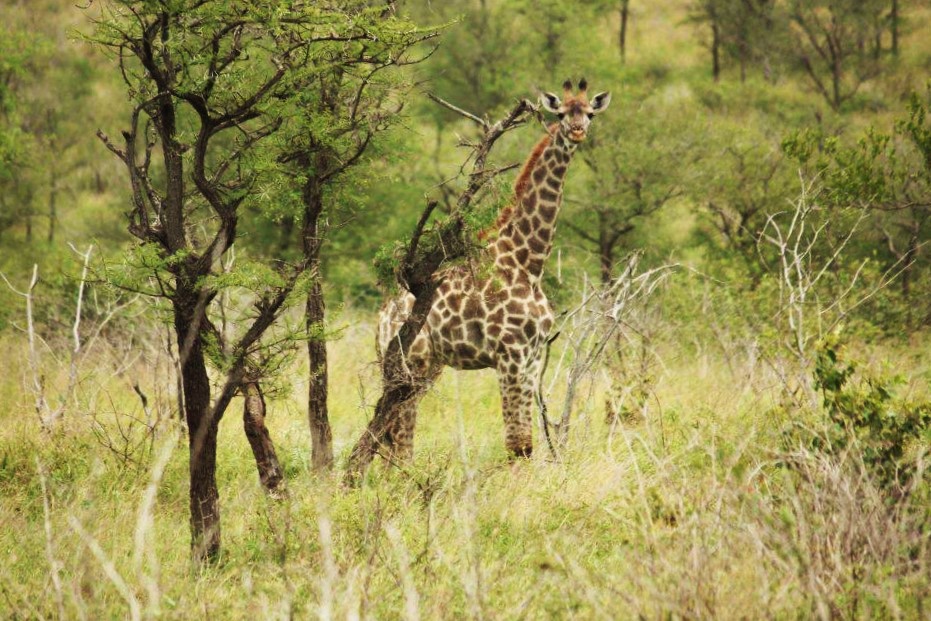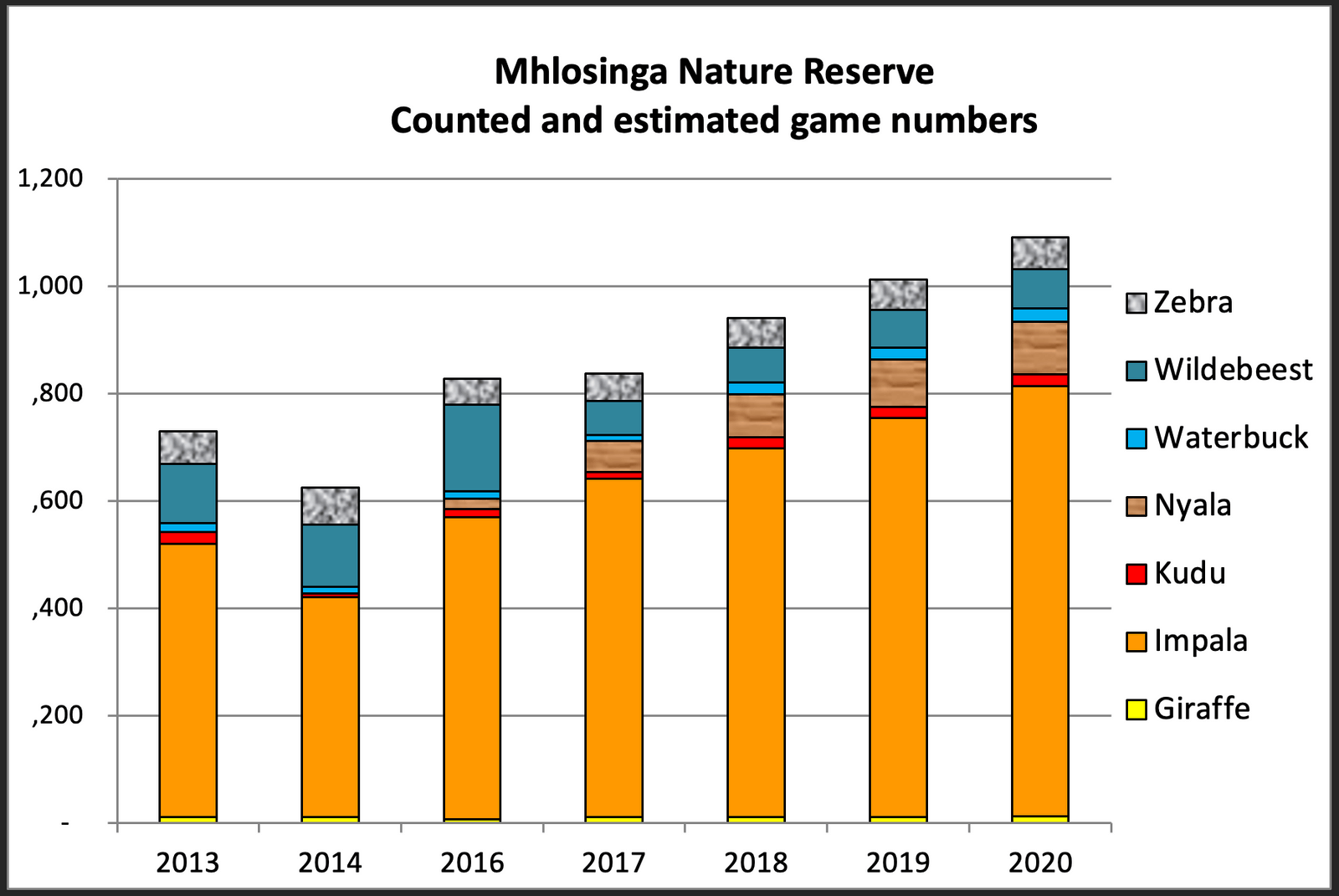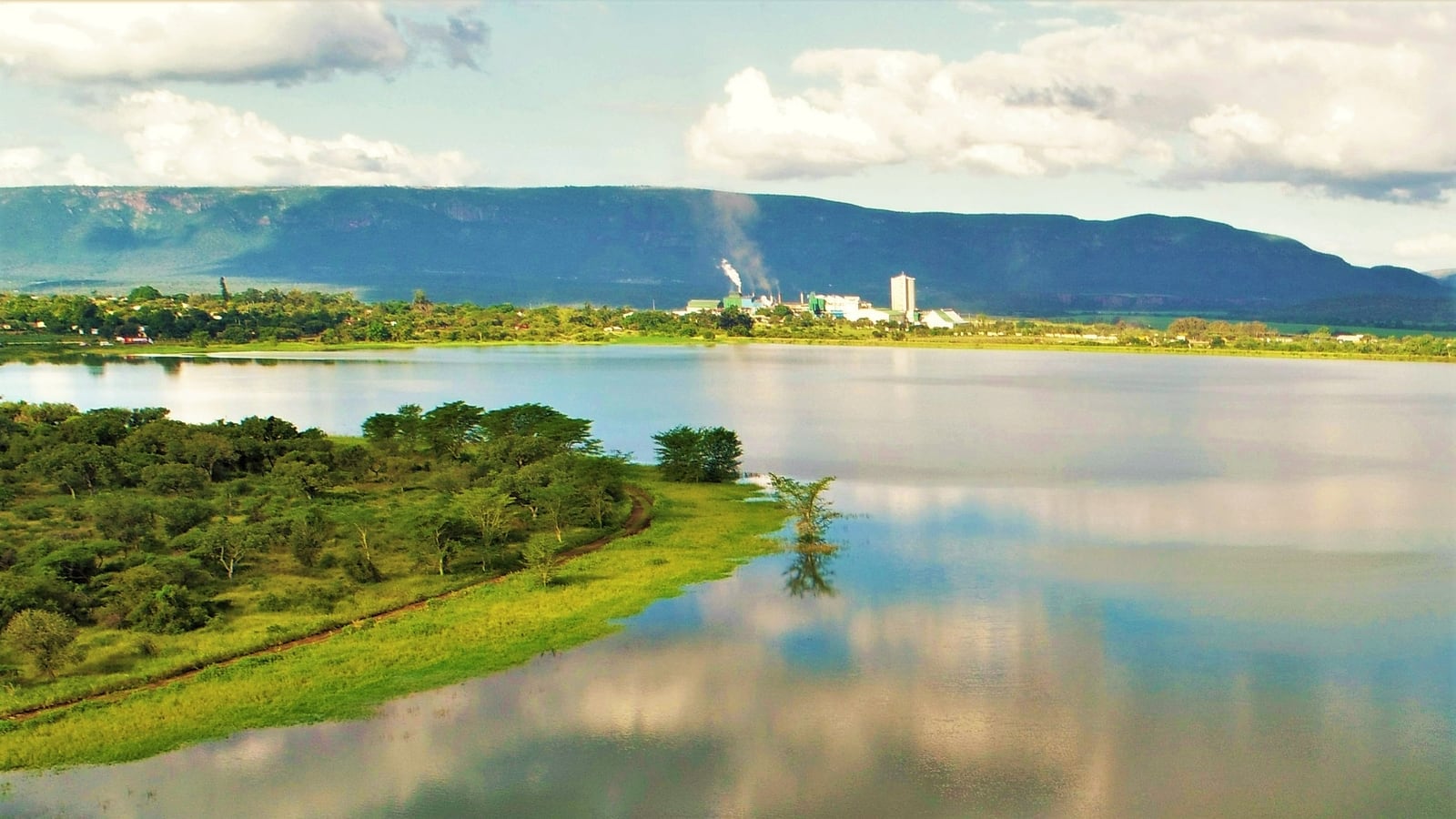Prior to the introduction of cropping, Ubombo was an extensive cattle ranch. A remnant of 9 361 hectares of the ranch land now remains as natural bush.
In 1986 a portion of 300 hectares adjoining the Van Eck Dam was set aside to be a wildlife sanctuary and named Mhlosinga Nature Reserve. The aim of Mhlosinga was to preserve a piece of the magnificent Swaziland bushveld and restore it, so far as possible, to its unspoilt state. The portion was game fenced and patrolled and various species on non-dangerous game were re-introduced into Mhlosinga. Mhlosinga was so successful and popular that over the years additional areas were added to the reserve. Today the reserve stands at 1 850 hectares in extent and now completely surrounds the strategically important Van Eck Dam. The environment has stabilised with an increasinghealthy and diverse population of wild animals. Over the past few years we have carried out aerial counts. The chart below shows the population of the wild animals found in the reserve (taking into account death, birth , poaching and controlled harvesting).

Nature Reserve
To the visitor Mhlosinga offers self guided game viewing, birding, hiking, mountain biking and photographic opportunities. Van Eck Dam is a popular spot for camping, picnicking, fishing and boating. The three Ubombo supported schools make regular use of the area for environmental, education and sporting events.
The conservancy bird count stands at 331 species and includes numerous ‘Near Threatened’, ‘Vulnerable’ and ‘Critically Endangered’ species. We have a very healthy population of White-backed Vultures which nest annually in the riverine forests of the Mtindzekwa River on Bar R Ranch. A small selection of other birds of interest include Tawny Eagle, Martial Eagle, Bateleur, Lappet and Cape Vulture, Secretary Bird, Black Bellied Bustard, Lanner and Peregrine Falcons, Yellow-billed stork, Marabou and Wooley-necked Storks, African Open bill, PinkTwinspot, African Finfoot; and there are many others. Our tree species list stands at 87.


RAMSAR
The Ramsar Convention is the oldest global environmental agreement. It promotes the wise use and conservation of water and wetland resources. In 2016 Van Eck Dam and surrounds within the Mhlosinga Nature Reserve was added to the Ramsar List of Wetlands of International Importance (Site Number 2122). When Van Eck Dam is low its shores become an attraction to waterfowl and water birds. Globally threatened species cited by Ramsar which may be seen in Mhlosinga are martial eagle, African white-backed vulture, African fish eagle, African goshawk, Nile crocodile, South African rock python and hippopotamus.
Only two other sites in Eswatini (Sand River and Hawane Dam) have been designated Ramsar Sites.
Big Bend – Mhlosinga Conservancy
Ubombo’s total ranch area, together with Mhlosinga Nature Reserve, forms part of the larger Big Bend – Mhlosinga Conservancy. The conservancy comprises four adjoining companies each of which own dedicated wildlife- or cattle-grazing areas. The aim of the conservancy is “to foster cooperation and collaboration between adjoining landowners with the purpose of optimising wildlife development and economic utilisation.” An important premise is that the greater the area under protection and the greater the freedom of movement between farms the healthier, more diverse and sustainable will be the wildlife population.
The members of the conservancy are:
9 361 hectares
Ubombo Sugar
2 600 hectares
United Plantations
2 500 hectares
Crookes Brothers
950
hectares
Machitema Farm
15 411 hectares
Total
Ubombo plays a leading role in the affairs of the conservancy.
A current initiative of the conservancy is to encourage members to game fence those of their farm boundaries that form the external boundary of the conservancy. This is considered a vital component in the effort to protect against the illegal occupation, poaching of game, illegal cattle grazing, woodcutting, and burning.